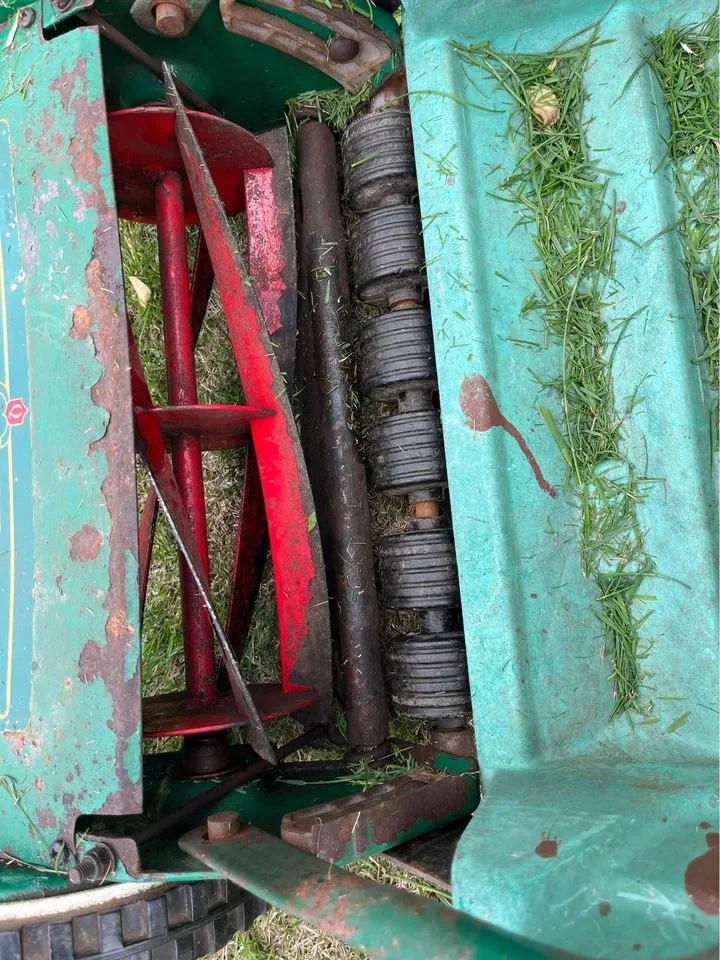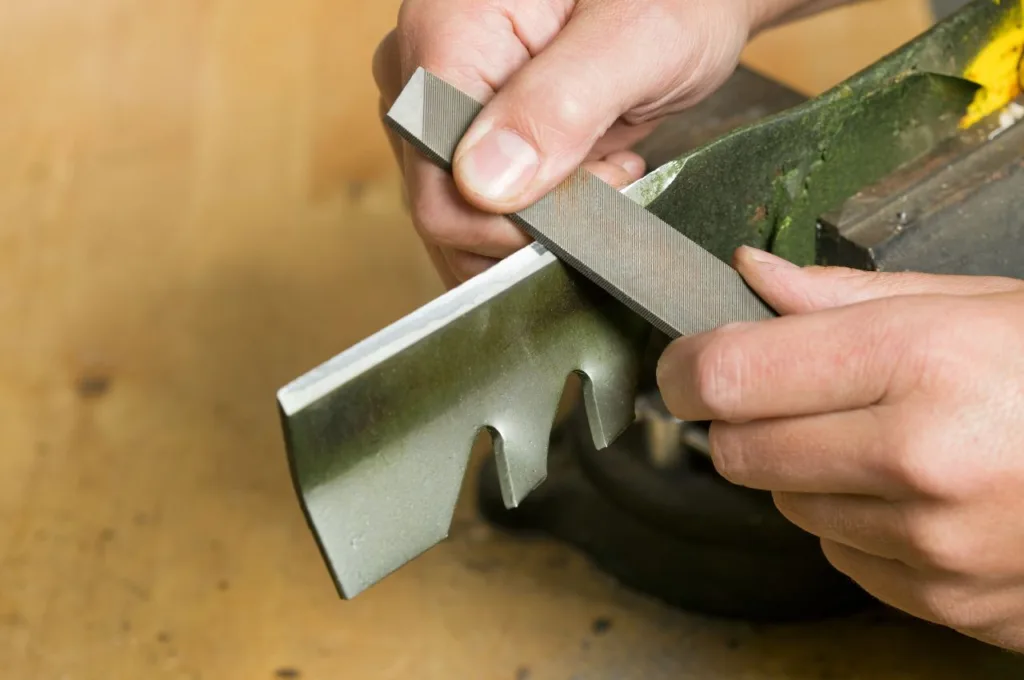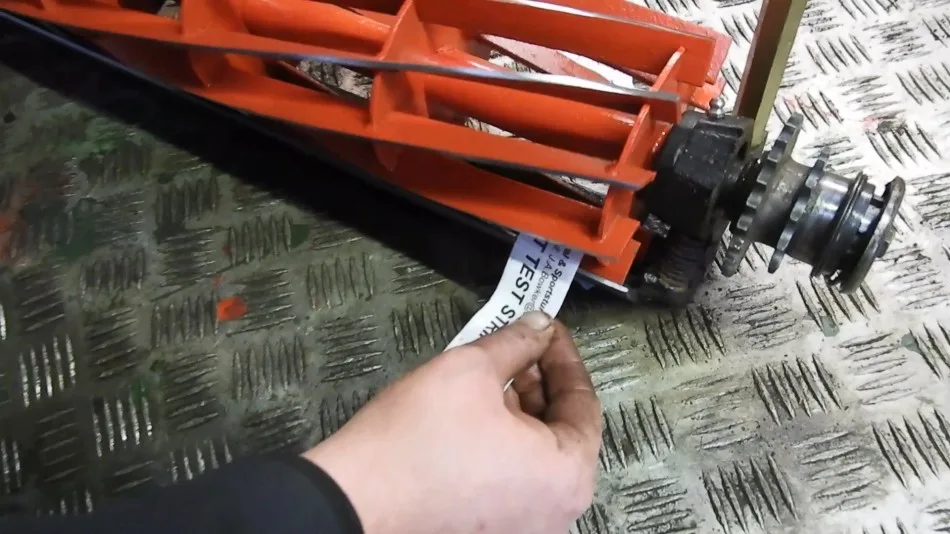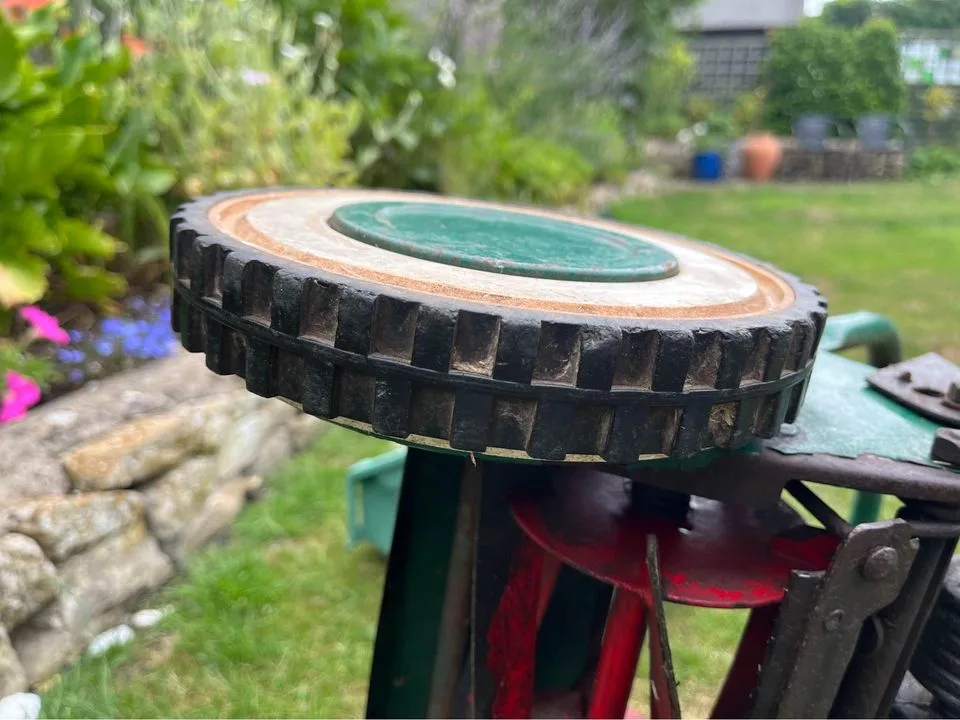If you want to enjoy your new manual lawn mower for as many years as possible, there are a few recurring maintenance jobs that you will need to commit to.
Here, we’ve shared the ultimate manual lawn mower maintenance checklist, which features all the maintenance tasks that apply to manual mowers. Refer to this list whenever you need a reminder of the most important manual mower maintenance tasks.
📌 How to Maintain a Manual Mower
There are 6 maintenance tasks that you should commit to for your manual lawn mower. These are:
- Clean the mower after each use
- Inspect and sharpen the blades
- Check the blade alignment
- Lubricate reels and wheel gears
- Inspect the mower for damage or wear
- Store the mower properly
Table of Contents
🚿 Clean The Mower After Each Use
As with every lawn mower type, one of the most important maintenance tasks for a manual lawn mower is to clean the mower after every use.
To clean a manual mower, follow these quick steps:
Put on a pair of protective gloves.
Position the mower on its side, with the wheels up in the air and the cutting blades facing away from you.
Use a brush to sweep away the grass clippings, dirt, and debris from the cutting blades, wheels, and other exposed parts.
Wipe down the entire mower’s surface to remove any remaining dirt, then flip the mower back to standing.
Note: Don’t hose down the mower or use water in the cleaning process unless instructed to do so in the user manual.
Routinely cleaning your manual mower prevents a buildup of grass and mud, especially around the blades. This, in turn, reduces the potential for corrosion and prevents long-term clogging of the blades, which helps to maintain high cutting efficiency and an even cut on the lawn.
By cleaning your mower regularly, you ensure optimal cutting performance – essential for a neat lawn appearance. A clean mower is also less likely to spread diseases on your lawn, and any signs of damage, wear, or loose parts are more noticeable, enabling you to address potential issues early and avoid costly repairs in the future.

✂️ Inspect And Sharpen The Blades
A manual mower uses a set of curved blades that trap grass against a cutting bar, cutting it with a scissoring action.
Over time, these blades will become blunt with normal wear. Additionally, they may be damaged by contact with a rock or other object on your lawn.
After every mow, take five minutes to inspect your manual lawn mower blade for sharpness, looking specifically for nicks, dents, and other signs of wear or damage.
Put on a pair of protective gloves (we wear these Chainsaw Protective Gloves, which are comfortable and reassuringly sturdy). Position the mower in a location where it’ll remain stationary, then rotate the blade reel and check for damage.
Most manual lawn mowers have long-lasting blades. Some people never sharpen their manual mower blades throughout the mower’s lifespan, but they will still get blunt. Ideally, sharpen your manual mower blades every 2-4 years, or as needed.
To sharpen a manual mower’s blades with a flat file, follow these steps:
Place the mower on a flat, stable surface and put on a pair of protective gloves.
Wedge a broom handle or a dowel into the blade assembly to prevent it from turning. You could also chock the wheels with a doorstop.
Brush away any grass or debris from the blades.
Take your flat file (we use the flat file in this WORKPRO Metal File Set) and begin to sharpen the blades, making 3-5 long strokes perpendicular to the blade until the blade feels sharper to touch.
Remove the broom handle, rotate the cylinder, lock the blade assembly in its new position, and repeat the process on the next blade.
Continue to repeat this process on each blade until all are nicely sharpened.
The guidelines above are general and may not apply to your specific mower model. Check the instructions in your user manual to make sure you’re following the manufacturer’s recommended guidelines for blade sharpening.

🧰 Check The Blade Alignment
As well as sharpening your manual mower’s blades, you’ll also need to check the blade alignment.
You won’t typically need to adjust the blades often, but if you notice that the mower is producing an uneven cut, it’s worth checking that the blade is properly aligned with the cutter bar.
To check the blade alignment, follow these steps:
Set the mower upside down and put on a pair of protective gloves.
Place a sheet of paper between the cutter bar and the mower blade.
Turn one of the mower wheels to spin the blade assembly. Check that the blade cuts the paper evenly.
If the paper is cut unevenly, follow the manufacturer’s instructions to align the blade.
It’s essential to closely follow the manufacturer’s advice here. Incorrectly adjusting the blade could damage the mower. Most adjustments will likely be minor.

⚙️ Lubricate Wheels And Reel Gears
Lubricating your manual lawn mower’s moving parts will help to reduce friction, prevent rust and corrosion, and extend the mower’s lifespan.
Lubricate the wheels and reel gears at least once a year, and spray a small amount of silicone-based lubricant on the cutting-height adjustment mechanism. Also make sure to wipe down your mower blades after mowing if your lawn is damp.
Ideally, get into the habit of lubricating the reel blades with a light oil such as WD-40 after every mow, which will prevent the buildup of rust, keep the blades in the best working condition, and reduce the effort required to push and pull the mower.

🧐 Inspect The Mower For Damage And Wear
It’s normal for any lawn mower to sustain damage and wear over time, even with proper use.
A manual mower may become worn or damaged due to use on rough, bumpy, or thick terrain, contact with rocks, gravel, or other debris, or simply normal wear and tear due to regular use.
Before you start mowing, take a moment to inspect your mower for damage and wear. Look for any cracks, dents, or bends in the frame, handle, and blade. Check for signs of rust or corrosion on metal parts, and make sure there are no loose or missing screws, nuts, or bolts. Inspect the wheels for signs of wear, misalignment, or damage. Ensure that they spin freely and are securely attached to the axles.
If you notice any signs of damage, consult your user manual and act accordingly. This might be as simple as tightening a bolt or a more complex task, like replacing a wheel.
If you can’t find guidance in your user manual, contact the manufacturer directly. Your mower might still be under warranty (most manual mowers have a 1-3-year warranty), and the manufacturer may be able to send you a free replacement part if needed.
Don’t use the mower if it isn’t functional. Manual mowers are safer to use than electric or petrol mowers because they give you more control over the mower operation, but there’s still a risk of danger, especially if you operate a poorly-functioning mower.
🏠 Store The Mower Properly
Some manual mower maintenance jobs are passive, meaning that they don’t necessarily require a concentrated effort on your part.
One of the simplest ways to maintain a manual mower is to store the mower in a dry location away from any heat sources, rain, or direct sunlight.
A great location for a manual lawn mower is a watertight shed, garage, or outhouse. Make sure the location is dry and not subject to rain or flooding, which could rust or corrode the mower’s metal parts and reduce its lifespan.
Like this guide? You might also like the following articles:
